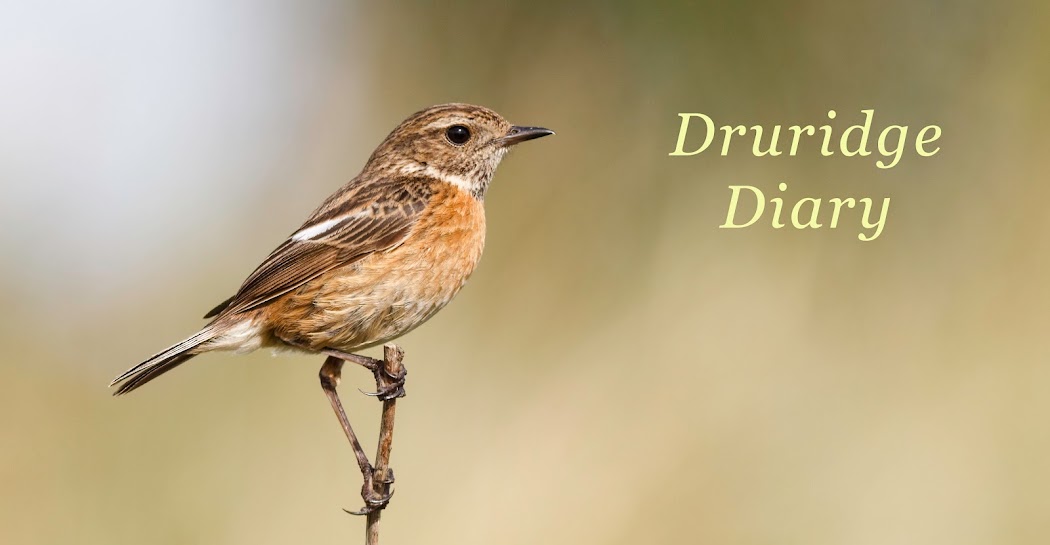There's been no blogging for while as I have been away to the Scottish Highlands for a few days. We stayed in a cottage in Glen Cassley - about as remote as it gets! No wifi, no mobile phone signal and no TV but there were greenshanks nesting at the end of the garden, dunlin and snipe displaying and an osprey pair just up the glen.
Being a coastal type, I was spoilt for choice with Handa Island, Lochinver and the Coigach to the west and the Dornoch firth and Loch Fleet to the east. We didn't make it north to the Kyle of Tongue, but did spend a couple of hours in Thurso which was long enough. Unfortunately my camera refused to read or write to any memory cards after day two so I don't have many photos.
 |
| The view up the glen to Ben More Assynt |
 |
| Home for the week - the neighbours popped by to say hello! |
 |
| Bonxie |
 |
| Another Bonxie on Handa Island |
 |
| Pale Arctic Skua on Handa |
 |
| Him'n'her - Arctic Skuas on Handa |
Back to Druridge this morning and a bit of ringing. I caught mostly juvenile birds including family parties of wren, willow warbler and great tit and a few young robins.
The great tit family was interesting, there were 10 birds in the net, nine juveniles and an adult - the whole brood and dad! The adult male was a retrap. I first caught him in July 2010 when he was fresh juvenile himself - he hasn't gone far in six years, but is obviously doing well. I've only caught him on two other occasions - in October 2011 and June 2013.
We also caught an adult stonechat today. Although stonechat is a common species at Druridge, we rarely catch many as they tend to stick to the dunes, any we do catch are usually wandering juveniles.
 |
| 2nd year male stonechat |
You can see from this photo that this is a second-year bird, the fringing on some of the crown feathers is the give-away here.
There seems to be a few more lapwing on the Budge fields now. I presume that these are returning birds that have failed to raise chicks - which is the story on the Budge fields this year, despite many sitting birds, there are hardly any chicks. The cold and wet spell a couple of weeks ago did for many ground nesters.
The swallows in the hides aren't faring any better with only one occupied nest.







